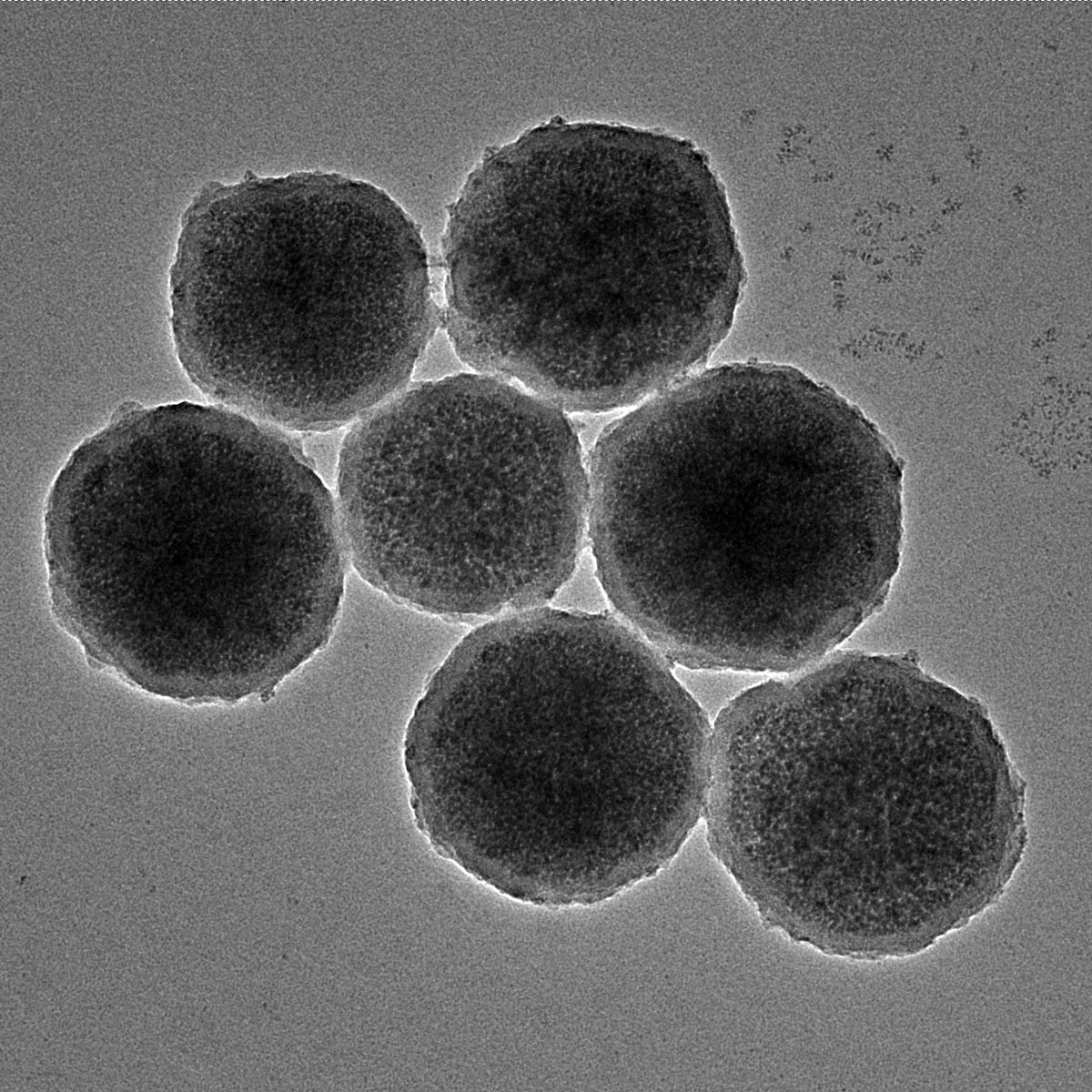Researchers at the University of Edinburgh (United Kingdom) and surgeons at the Sixth People’s Hospital in Shanghai (China) have created magnetic nanorobots, 20 times smaller than a red blood cell, that could be used to treat the feared consequences of aneurysms. These dilations of the blood vessels in an artery of the brain can rupture and cause serious bleeding – often fatal – as well as a whole range of brain damage.
This advance would allow precise treatment, and with relatively low risk, of these conditions responsible for some 500,000 deaths a year worldwide, according to the international team that carried out the study, published in the journal nanotechnology. Small.
The researchers designed these tiny robots so that they carry thrombin—a protein that exists naturally in blood and is involved in clotting—on the inside, and on the outside, they are wrapped in an organic protective coating, which is designed to melt. The heart of the machine are iron oxide nanoparticles that give it its magnetic character.
In lab animal models, researchers injected an army of hundreds of billions of these tiny robots into an artery and—using external magnetic sources and medical imaging—guided them remotely to the aneurysm. Once there, they grouped them inside the damage, forming a kind of nest, and heated them until they reached their melting point. As their coating melted, the nanorobots released thrombin that blocked the aneurysm, preventing or stopping brain hemorrhage.
The team has successfully tested these devices on a small number of rabbits. The melting temperature of the coating can be adjusted—by varying the proportion of the mixture of oleic acid and 1-hexadecane that make up the protector—to adapt it to the practical needs of animal experiments. In the case of these tests with rabbits, it was 42.5 °C, according to the researchers. From the School of Engineering at the University of Edinburgh, Qi Zhou, co-director of the study, considers that this is “an important step to bring these technologies closer to the treatment of these medical conditions in clinical practice.” This team has also developed nanorobots to remove blood clots that could be used to treat strokes.
The current treatment of aneurysms is quite complex. Typically, surgeons thread a tiny microcatheter tube with which they must navigate the complex network of small blood vessels in the brain until they reach the aneurysm, a painstaking task that can take hours of surgery. In these catheters they insert metal coils to stop blood flow from the aneurysm, or a mesh-shaped tube called a stent to divert blood flow from the artery.
The researchers present their new technique as an alternative to the risk of the body rejecting these implanted materials and the dependence on anticoagulant drugs – which can cause bleeding and stomach problems -, in addition to avoiding the long hours of a surgical operation that involves a lot of artisanal. They also claim that they could treat larger brain aneurysms that are difficult to stop quickly and safely.
For Zhou, “nanorobots are destined to open new frontiers in medicine: they could allow us to perform surgical repairs with fewer risks than conventional treatments and direct drugs with millimeter precision to parts of the body that are difficult to access.” Nanotechnology has been aspiring to this future in which tiny robots could be controlled remotely to carry out complex tasks inside the human body for almost thirty years, but this future still seems distant.
Putting nanomedicine into practice
“One of the main obstacles to achieving practical applications in nanomedicine is that most advances have been carried out in chemistry or materials laboratories, with designs aimed at verifying fundamental theories or processes. Instead, our study is driven by a very specific clinical need, and co-designed with surgeons, to make nanorobots work in clinical settings,” says Zhou.
For Samuel Sánchez, deputy director of the Institute of Bioengineering of Catalonia, “the good thing about this study is that they have reached an application, they have managed to demonstrate it in rabbits.” Sánchez, a researcher unrelated to this advance, managed to cure cases of bladder cancer in mice a few months ago using nanorobots, which used the urea in urine to move.
“What I have seen since I set up the spin off [una empresa llamada Nanobots Therapeutics] a year and a half ago is that when you go to regulatory agencies you can make it very interesting from an academic point of view, but it has to be the other way around: as simple as possible and improve what already exists: in this case, it is an iron core , a coating,” says Sánchez, who remembers that there are only 16 nanoparticles that are accepted by regulatory agencies, such as the European EMA or the American FDA.
The next steps for the authors of the recent advance in rabbits will be to test this technology in larger animals – such as pigs or sheep – and improve it so that the nanorobots move robustly and reach deeper aneurysms. “The timing of when our technology will be ready for surgery in humans is a bit uncertain. There is still work to be done, but we believe it will be able to revolutionize the treatment of cerebral aneurysms, probably in one or two decades,” concludes Zhou.
